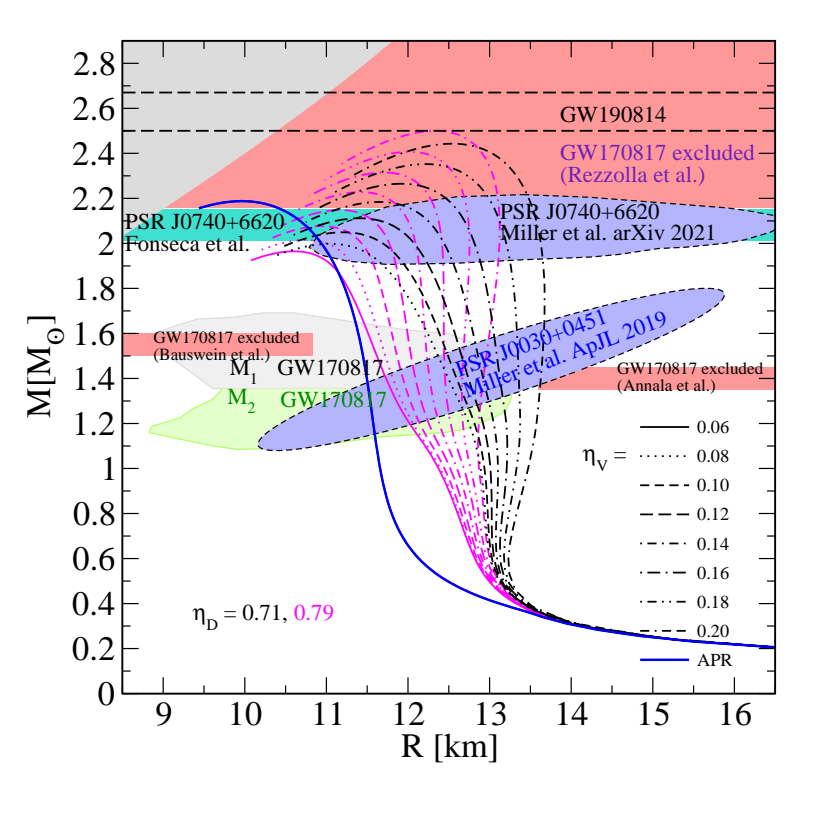
Neutron and hybrid stars
Typically, particle physics is associated with micro-world phenomena, over distances a hundred thousand times smaller than the size of a hydrogen atom. Therefore, it may come as a surprise to the reader that the details of those phenomena play a vital role in understanding astrophysical objects called neutron stars which – as the name indicates – are composed mainly of neutrons, but also protons and electrons, seasoned with a small number of other elementary particles. Protons and neutrons themselves are composed of quarks, therefore it is reasonable to ask if in such dense and cool systems as neutron stars such high densities can be achieved for quarks to be released. In such a case, one speaks of hybrid stars whose nucleus is composed of quarks and outer shells of neutrons and protons. The nature of transition between proton-neutron and quark matter in conditions prevailing in neutron stars is not known. So is this transition a phase transition of the first kind, quite similar to the one responsible for boiling water in a kettle, or is it a mild crossover, similar to demagnetizing a heated magnet? Since describing this phenomenon and trying to answer the above question are extremely complicated, they require detailed modeling based on multi-parameter theories.

In the paper titled Bayesian analysis of multimessenger M-R data with interpolated hybrid EoS published in the journal The European Physical Journal A volume 57, Article number: 318 (2021), A. Ayriyan, D. Blaschke, A. G. Grunfeld, D. Alvarez-Castillo, H. Grigorian, and V. Abgaryan applied the Bayes analysis method, based on a simple theorem in probability calculus – the Bayes theorem, that expresses the accounting probability of the occurrence of a random event. Taking into consideration astronomical observations, measurements of gravitational waves emitted by colliding neutron stars, the authors found the most likely parameters for models describing the neutron-quark matter phase transition. It turned out that they correspond to a mild crossover type transition. In consequence the envisaged structure of a neutron star will be composed of superconductive quark core, mixed quark-neutron phase crust covered with neutron outer crust. The mixed quark-neutron interlayer would not exist if the quark-neutron transition had been of the first type. Detailed observational predictions stemming from such structure remain the object of future study.
Added by: Joanna Molenda-Żakowicz
Dean’s representative for faculty promotion and media relations
